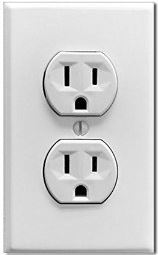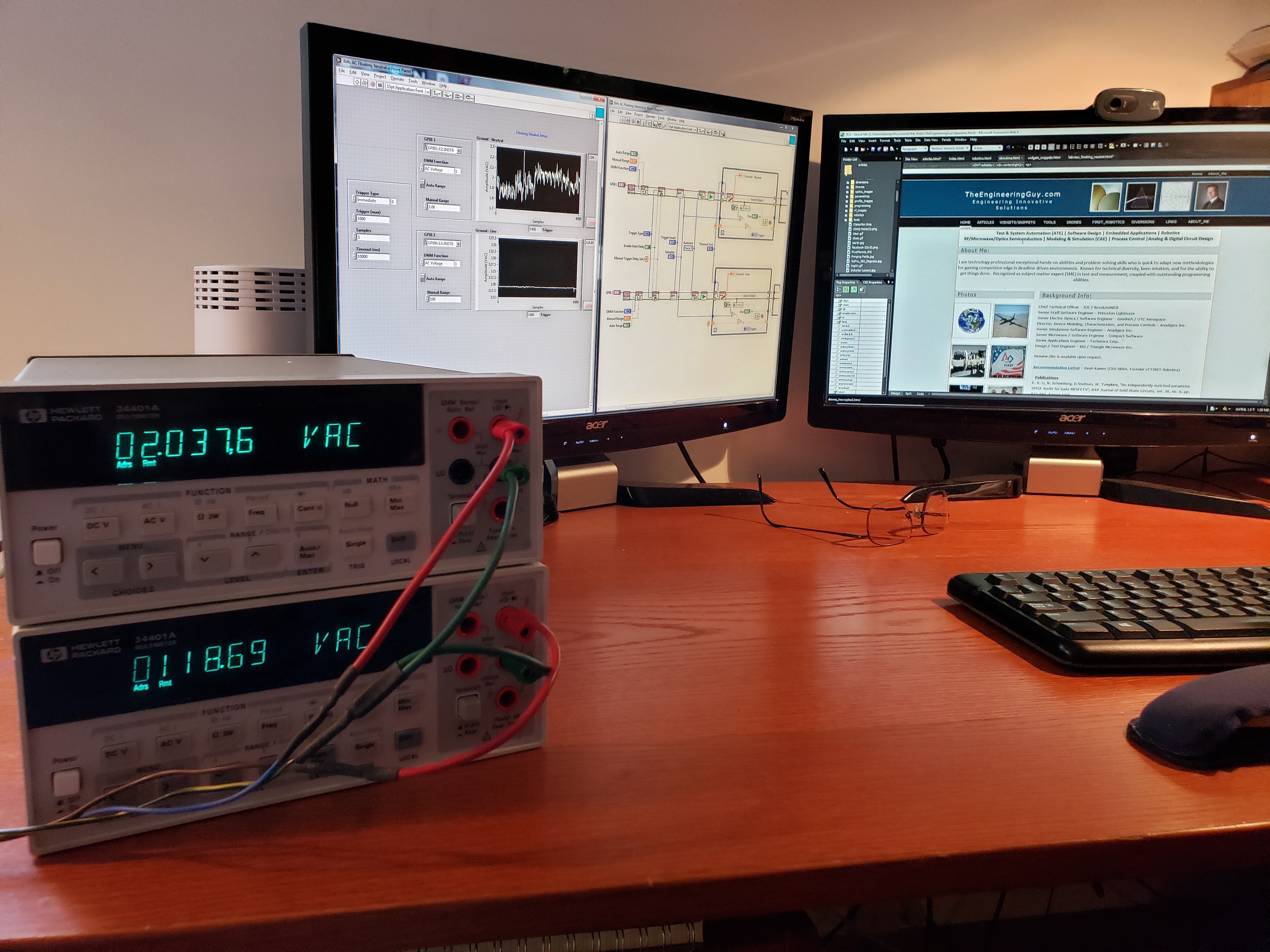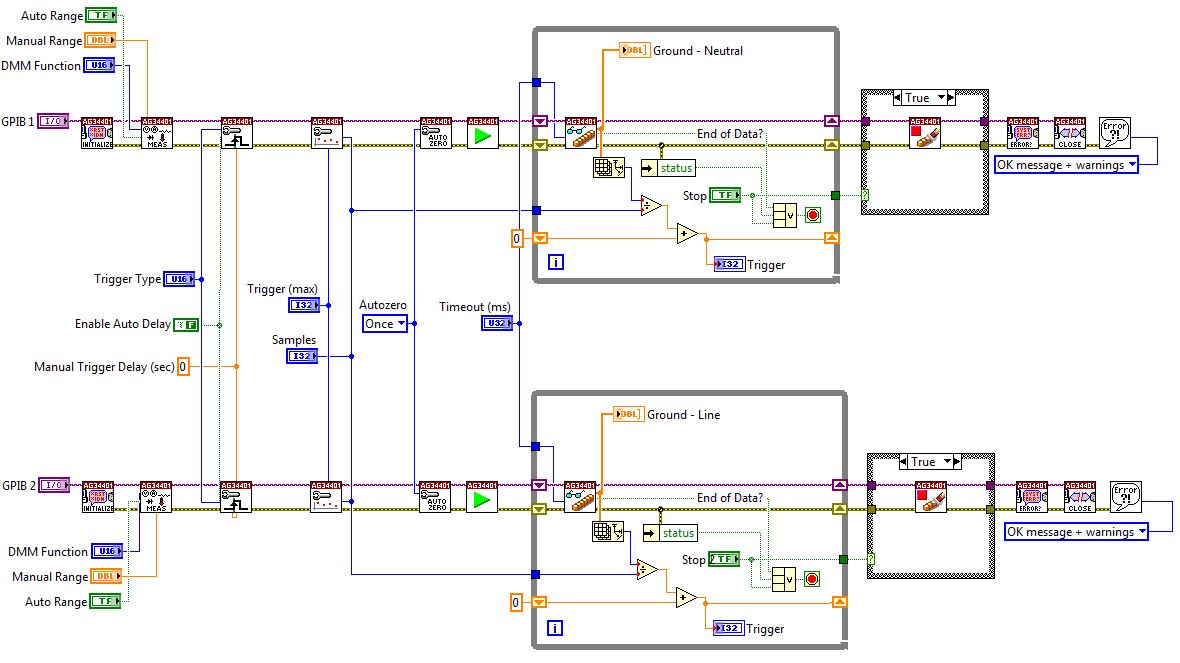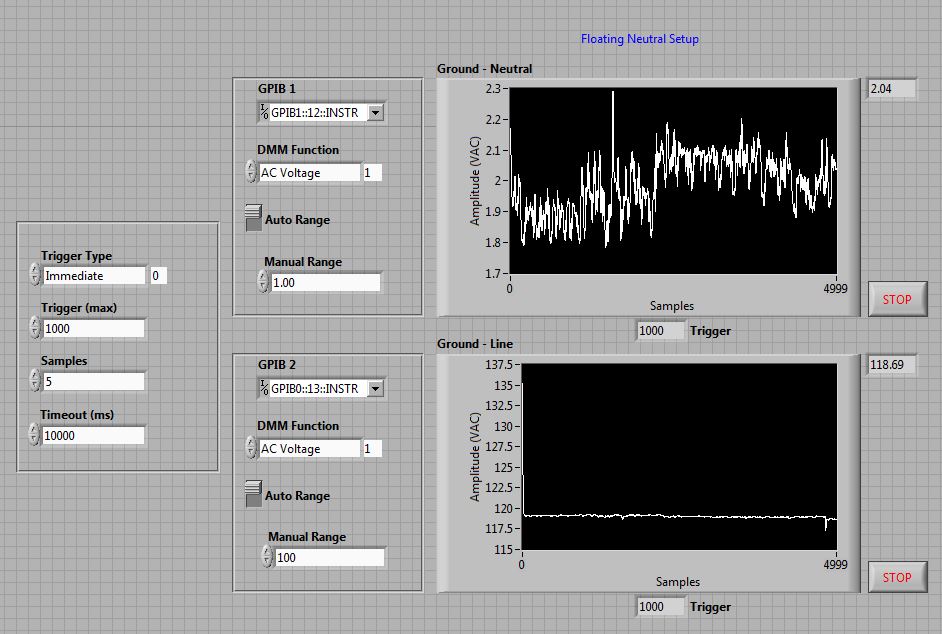LabVIEW setup for measuring Floating Neutrals
 Below is an experiment looking at the voltage drop and floating neutral
potential of a 100' extension cord. Two HP34401 digital multimeters
(DMM) are used; one connected from line-to-ground, and the other is
connected to neutral-to-ground.
Below is an experiment looking at the voltage drop and floating neutral
potential of a 100' extension cord. Two HP34401 digital multimeters
(DMM) are used; one connected from line-to-ground, and the other is
connected to neutral-to-ground.
The first takeaway from this experiment is the line-ground voltage. At
the wall, the line-ground voltage was 119.7VAC. Looking at the end of
100' of extension cord we now have 118.7 volts, so we lost a volt due to
line resistance. This is actually pretty good, and probably has to do
with the heavier gaged wire used in its manufacture. The real problem
here is the ground-neutral voltage. At the wall, the ground-neutral
was 0.65VAC. As stated in my previous article about 'Floating
Grounds', a voltage above 1.0VAC could present problems. For
measurements you'd see unexplained variations in the measurements, and for
digital communications you probably see slower transmission rates or
communications just stopping as the system struggled to find Logic 0.
There's more to this discussion which I'll go into when a get a few
minutes. For now, before setting any systems or taking measurements it
is probably a good idea to go to your wall plug and measure what you are
working with. I've seen little things like this burn even the most
seasoned engineer. When dealing with a polynomial where everything is
an unknown you solve the easiest variables first.


